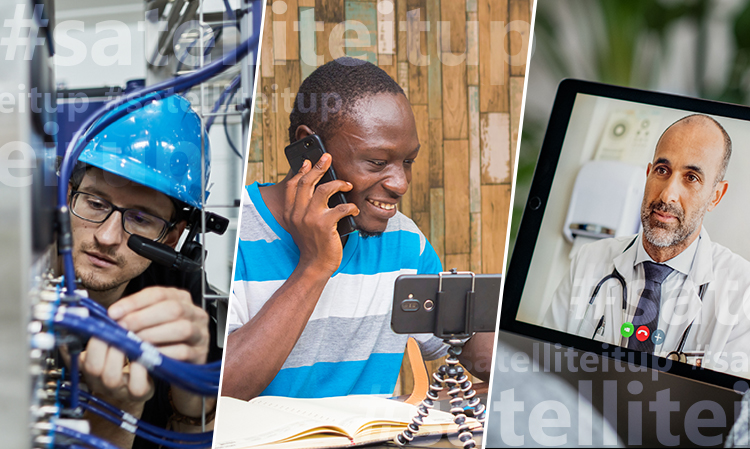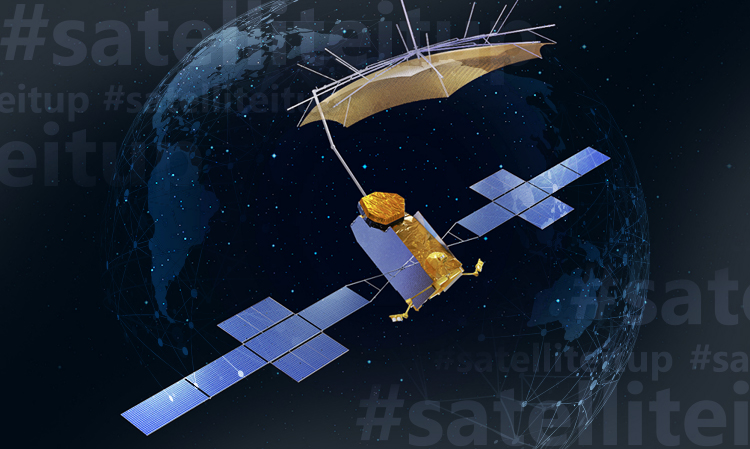The L-band (long band) frequency is often considered as a back-up channel for emergency communications. This is because it leverages a wide range of the communications spectrum and also offers adequate precision.
However, this view is very limited – particularly in light of the latest industry developments. In order to leverage this frequency to its maximum for satellite voice and data services, we must keep in mind some characteristics that empower its usage for critical communications.

Typically, L-band is used for voice calls and also powers up applications with lower traffic consumption, such as emails and messengers. It is also used to power IoT services, channelling data from remote sensors to the control centre. L-band powers critical operations across many industries. The most prominent use cases include:
Emergency communications over voice channels can be adapted for crew welfare programmes. Terminals, such as MarineStar, can be used on barges and offshore rigs akin to public phones, with the crew using individual vouchers to make calls. L-band devices can be tracked from onshore to monitor the vessel’s coordinates. A reliable voice line can also be used for emergency communications, enabling the team to contact shore patrol.
L-band is crucial in disaster recovery scenarios, providing a reliable satellite communication service for emergency responders and public safety agencies during and after disasters. These services ensure continuous coordination and information sharing in critical times. A satellite phone, such as IsatPhone 2, operating over the global Viasat network with 99.9% availability, has been engineered to operate within extreme conditions and is also rugged – dust, splash and shock resistant (IP65, IK04). The L-band is perfectly suitable for enabling push-to-talk (PTT) communications. Devices, such as Iridium Extreme PTT, can be used akin to radio, facilitating coordination of the operations in the field.
The L-band is particularly valuable as a means of secure satellite communication. L-band communications can be designed to have a low probability of interception and are more resistant to jamming. This is achieved through techniques such as frequency hopping, encryption, and spread spectrum technologies, which enhance the security and integrity of communication links. L-band systems are often designed to be interoperable with other military communication systems, allowing seamless integration and coordination across different branches of the armed forces and allied nations. This interoperability enhances the overall security and effectiveness of military operations. Ruggedised terminals, such as Thuraya IP Commander, are often used by military corps and have a MIL-SPEC set of features that have been engineered to enable mission-critical voice and data connectivity in the most extreme environments.
L-band‘s relatively low power consumption is crucial for battery-operated IoT devices, enhancing their longevity and efficiency. These characteristics make L-band the preferred choice for applications requiring wide-area and continuous coverage, such as agriculture, environmental monitoring, asset tracking, and remote infrastructure management. IEC Telecom has a wide portfolio of IoT solutions for tracking, asset management, and personnel security. Considering the sophisticated nature of remote operations, these solutions are expertly managed by a specialised unit, Traksat, and delivered over a powerful software suite, including a comprehensive web platform. Offering advanced visibility and control over your remote units, this forms a single system to manage fixed and moving assets in real-time (two-way text messaging and emergency alerts), monitor tracking history (access to server logs), determine operational areas (geofencing), and much more. In addition, our in-house team of developers can design a customised solution that corresponds to the specific needs of your projects.

IEC Telecom Group is committed to providing cost-effective connectivity services to its customers, regardless of the operational location or budget size. To ensure that internet consumption is operationally feasible, IEC Telecom enables its applications to work even in low-bandwidth environments. These optimised applications include:
OneAssist enables the real-time streaming of videos and even shares snapshots. Not only is this satellite communication channel AES 256 encrypted for the secure exchange of data, it operates in ultra-low bandwidth environments – as low as 40 Kbps. OneAssist essentially brings a subject matter expert to the source of the problem without complicated and expensive logistical concerns.
OneTeam enables an optimised videoconferencing and messaging channel in a low-bandwidth environment – as low as 40 Kbps. It serves as an efficient tool for collaborations between remote sites and HQ as well as within remotely placed teams. OneTeam communications are secure (AES 256 encrypted) for real-time critical decision-making and support welfare programmes.
OneMonitor enables the efficient exchange of audio and visual signals as well as email notifications with a snapshot of the area under surveillance, directly to your computer or phone. It can easily be integrated with an existing CCTV system and is compatible with most cellular and satellite communication platforms. OneMonitor is an optimised and secure surveillance app with AES 256 encryption.
OneHealth enables multi-party video calling for the most cost-effective digital healthcare delivery. Operating via a user-friendly dashboard, it quickly shares patient data and expert advice for the most appropriate and immediate diagnosis. OneHealth is perfect for emergency medical assistance, highly portable, and maintains confidentiality of patient information over an AES 256 encrypted channel.

The use of L-band is expected to rise with the advent of Thuraya T4. With a launch expected in late 2024 and commercial service available by mid-2025, Thuraya T4 will offer speeds upto 1 Mbps – revolutionising the array of applications that operate over the L-band frequency.
This Next Generation Satellite (Thuraya 4-NGS) is part of a paradigm-shift in the overall satcom ecosystem – improving communication channel security and resilience, supporting multiple interfaces, and maneuvering bandwidths while the payload is in orbit.
Are you ready to maximise use of your devices, connected to L-band? Reach out today!